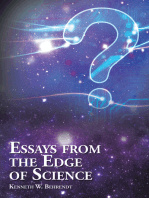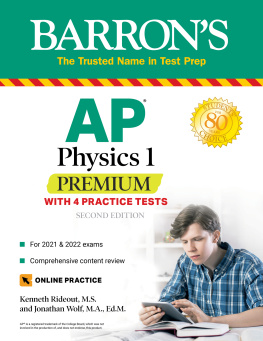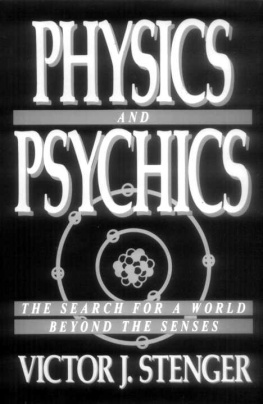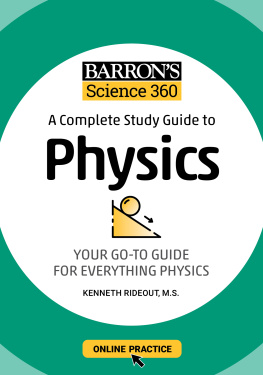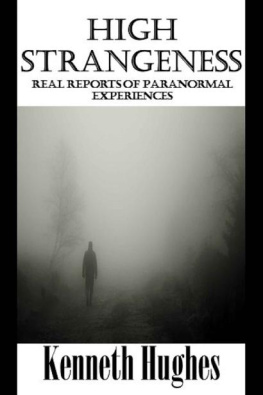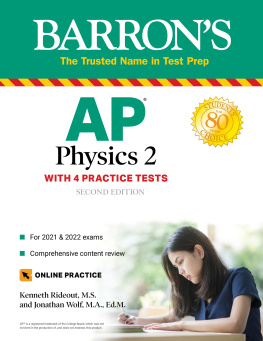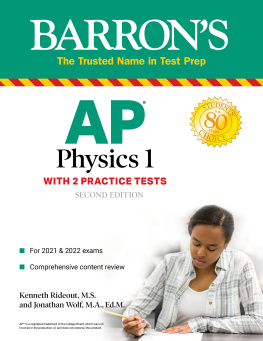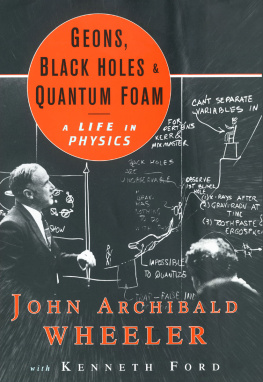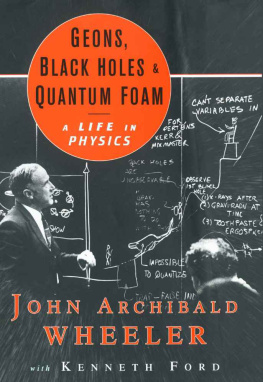Kenneth W. Behrendt - The Physics of the Paranormal
Here you can read online Kenneth W. Behrendt - The Physics of the Paranormal full text of the book (entire story) in english for free. Download pdf and epub, get meaning, cover and reviews about this ebook. genre: Science. Description of the work, (preface) as well as reviews are available. Best literature library LitArk.com created for fans of good reading and offers a wide selection of genres:
Romance novel
Science fiction
Adventure
Detective
Science
History
Home and family
Prose
Art
Politics
Computer
Non-fiction
Religion
Business
Children
Humor
Choose a favorite category and find really read worthwhile books. Enjoy immersion in the world of imagination, feel the emotions of the characters or learn something new for yourself, make an fascinating discovery.
- Book:The Physics of the Paranormal
- Author:
- Genre:
- Rating:5 / 5
- Favourites:Add to favourites
- Your mark:
- 100
- 1
- 2
- 3
- 4
- 5
The Physics of the Paranormal: summary, description and annotation
We offer to read an annotation, description, summary or preface (depends on what the author of the book "The Physics of the Paranormal" wrote himself). If you haven't found the necessary information about the book — write in the comments, we will try to find it.
The Physics of the Paranormal — read online for free the complete book (whole text) full work
Below is the text of the book, divided by pages. System saving the place of the last page read, allows you to conveniently read the book "The Physics of the Paranormal" online for free, without having to search again every time where you left off. Put a bookmark, and you can go to the page where you finished reading at any time.
Font size:
Interval:
Bookmark:
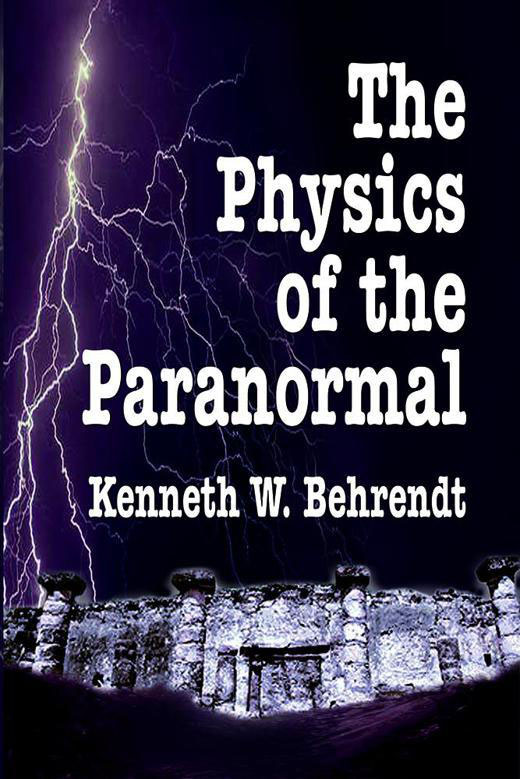
THE PHYSICS OF THE
PARANORMAL
By
KENNETH W. BEHRENDT
1987, 2003 by Kenneth W. Behrendt. All rights reserved.
No part of this book may be reproduced, stored in a retrieval system, or transmitted by any means, electronic, mechanical, photocopying, recording, or otherwise, without written permission from the author.
ISBN: 1-4033-2550-2 (e-book)
ISBN: 978-1-4033-2550-1 (ebook)
ISBN: 1-4033-2551-0 (Paperback)
ISBN: 1-4033-2583-9 (Hardcover)
1stBooks-rev. 12/27/02
This book is an attempt to bring the many and varied phenomena of the paranormal into the realm of understandable science. I realize that this is no easy task and the reader should therefore view what is to follow as the mere formulation of tentative working hypotheses for the topics treated. If paranormal phenomena (a term I use to collectively refer to all hyperphysical, psychic, parapsychological, supernatural, or supraphysical events) are ever to be included within the bounds of physical science, then research in the subject must progress far beyond the current voluminous compilation of case histories. Indeed, to eventually determine the physical truth regarding these events, we must initially engage in speculation which meets two basic criteria. Firstly, this speculation must not be random, but rather be guided by intuition toward the concepts which offer the greatest promise of advancement in paranormal science. Secondly and even more importantly, all proposals for the causative mechanisms of the various paranormal phenomena should be capable of experimental verification or denial.
It is an unfortunate fact that much of the material in this new area of human knowledge is subjective in nature and only rarely repeatable under laboratory conditions. This reality has discouraged most of the scientific orthodoxy from pursuing the subject.
The field has therefore been left to the private investigators who, through their writings, have done an excellent job of recording and preserving the data, but have not managed to significantly advance the theoretical basis of the subject which is necessary in order to rationalize its various effects and make them accessible to human reason.
It is my goal in this book to act as an intermediary in the current state of affairs that exists in present day paranormal science. I wish to play the role of a bridge between the scientific orthodoxy and the diligent private investigators. While not what one would normally call an orthodox scientist, I do have considerable training in the sciences of chemistry and physicsyet, on the other hand, while not being as intimately involved in the investigation of individual cases of the paranormal as the private psychic or paranormal researcher, I do, nevertheless, have some familiarity with their methods and the literature that they have produced. It is thus my hope that my hybrid capabilities will allow for the creation of a collection of concepts that will be seen to validate and rationalize the various paranormal phenomena that are treated herein.
Before ending this brief introduction, I should also give the reader some idea as to my motivation in producing a book that may correctly be perceived as an attempt to, at least partially, obtain the actual physics of the paranormal.
I can start by stating that my primary interest has been and still is the subject of UFOs or flying saucers, particularly the methods that might be used by our extraterrestrial visitors to propel their craft across the vast gulfs of space and through our planets atmosphere with enormous velocities and accelerations that seem to defy our known laws of physics. After a twenty year study of UFOs, my research had reached a level where I was obliged to begin the publication of a journal devoted to the topics of UFO propulsion and related effects. This journal, Annals of Ufological Research Advances or AURA, for short, presents a novel theory to explain UFO performance which is based on the assumption that our extraterrestrial visitors are able to generate a new kind of field effect in addition to the three readily measurable, natural field effects that current earthly science recognizes (note: these three field effects are the gravitational, electromagnetic, and nuclear field effects. Some scientists consider electric and magnetic fields to be separate field effects and also consider the nuclear fields to be due to electric and magnetic fields, but even in this case the total number of fields is only three).
In my past UFO related articles, I have referred to this extra alien field effect as the anti-mass field. This name is appropriate since once an anti-mass field is generated, it has the remarkable ability to actually weaken the normal gravitational and inertial properties of objects that are used to define their masses. We can imagine that all of the subatomic particles in the atoms of an object continuously emit an invisible form of nonelectromagnetic radiation that radiates out of the object in all directions at the speed of light. This nonelectromagnetic radiation constitutes the gravitational field or, more properly, the mass field of the object and it produces gravitational effects when it interacts with the mass fields of other objects or inertial effects when its emission pattern is distorted by the acceleration of the object. An artificially produced anti-mass field is able to negate the mass of an object because the anti-mass field can be thought of as having a polarity opposite to that of the natural mass field emitted by the object. If the two fields are superimposed, the net result is that the mass field radiated from the object is effectively diminished and can then produce less gravitational and inertial properties for the object and we would perceive the object as having lost mass.
If the object happens to be located near a planetary surface, then the object will lose weight as it loses mass due to the anti-mass field being artificially radiated from it. At some point the object will be so light that, if located in a planetary atmosphere, it will eventually weight less than the volume of air its form displaces. It will then rise in the atmosphere due to buoyancy and float about.
The reader may now realize how such a field effect would be utilized in UFO propulsion. The craft would carry within its hull a device that would function as an anti-mass field generator. This piece of equipment would artificially produce a strong anti-mass field that would negate or cancel the natural mass field of the craft and its crew. Once massless, such a craft could easily hover without any apparent means of support and very rapidly fly about the atmosphere if thrust forces are applied to its hull while the aerodynamic drag on the hull is greatly reduced. With no mass such a craft and its crew would be immune to the destructive inertial forces that affect massive objects as they violently accelerate or erratically maneuver. In past AURA articles, it was shown that, in space, the use of anti-mass fields will allow a massless spacecraft to easily accelerate past the light barrier so as to achieve enormous hyper-light velocities. In effect, the craft operates beyond or outside the limits of Einsteinian relativity to achieve velocities great enough to reduce interstellar and intergalactic transit times to a very small percentage of a crew members lifespan.
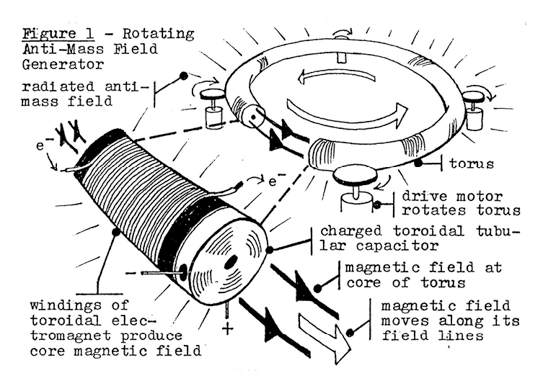
The reader may be wondering why I have dwelled so long on the propulsion of UFOs when this book is supposed to concern itself with the paranormal. The reason is that the above described concept of the anti-mass field has been very highly successful in rationalizing UFO behavior and, after giving the matter some thought, it occurred to me that the existence and properties of this new field effect had the potential to explain many of the so-called paranormal phenomena! By introducing this new concept into the field of paranormal science, it may be possible to put this subject on as firm a physical basis as is being done with the science of ufology in the pages of AURA.
Next pageFont size:
Interval:
Bookmark:
Similar books «The Physics of the Paranormal»
Look at similar books to The Physics of the Paranormal. We have selected literature similar in name and meaning in the hope of providing readers with more options to find new, interesting, not yet read works.
Discussion, reviews of the book The Physics of the Paranormal and just readers' own opinions. Leave your comments, write what you think about the work, its meaning or the main characters. Specify what exactly you liked and what you didn't like, and why you think so.


